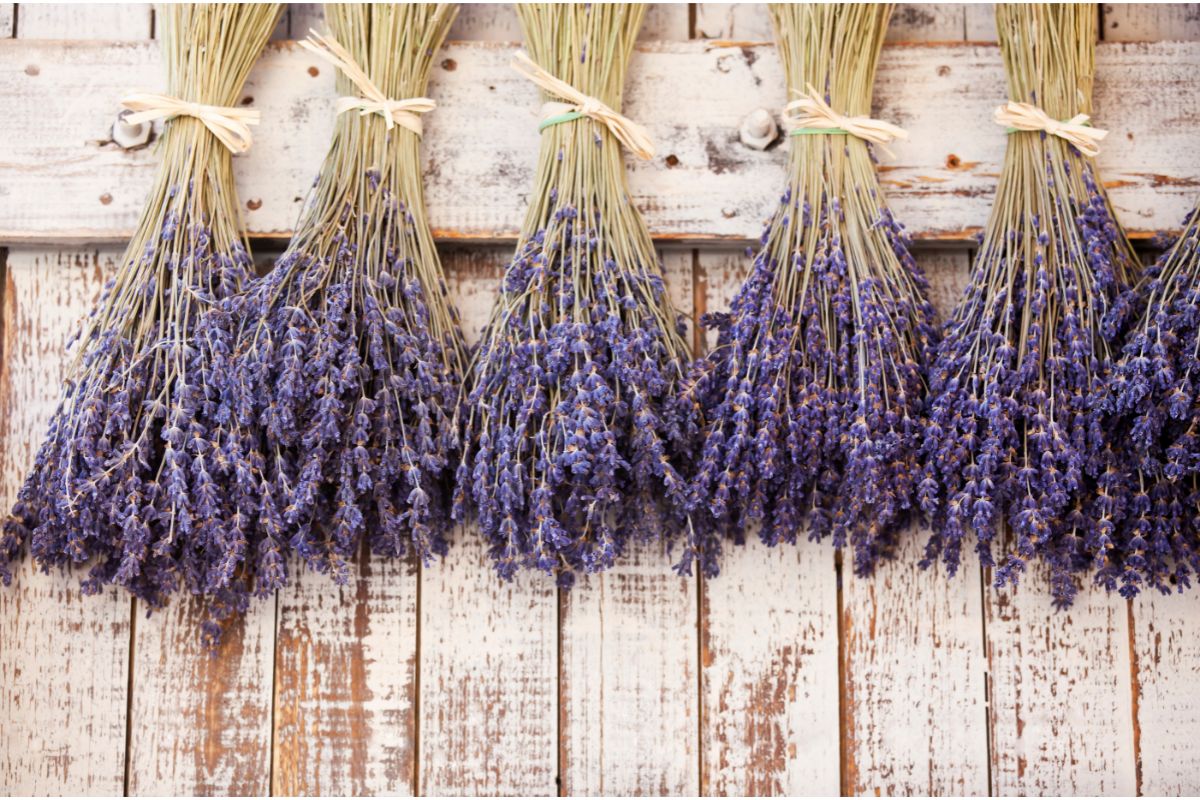Dried lavender has a shelf life of up to 10 years when stored correctly at room temperature in airtight containers in a cool, dark, dry place. Store dried lavender buds, stems, or leaves whole to improve their shelf life. Use the dried herb within a year for maximum flavor and aroma.
Table of Contents
What is the Shelf Life of Dried Lavender?
Dried lavender has a shelf life of up to 10 years when stored properly. The flavor and scent of lavender may begin fading after a year in storage, which is why it’s best to use dried lavender within a year of drying it. It can be 2-3 years before the herb loses a significant amount of its original fragrance and flavor.
How Do You Make Dried Lavender Last?
There are several precautions to take to ensure your dried lavender lasts a long time. From harvesting lavender to drying and storing it, here are some ways to maximize its useful life:
- Harvest lavender early in the morning once the night dew has fallen and before the sun gets too hot. The lavender plants will be at peak quality at this time.
- Harvest fresh lavender that has tender stems and supple flower buds and leaves.
- If you buy lavender from the grocery store or lavender farm, pick the freshest bunches with brightly colored flowers and leaves.
- Dehydrate lavender using as little heat as possible. High amounts of heat ruin lavender essential oils, causing scent and flavor loss.
- Store dried lavender in airtight containers in a cool, dry, dark place. Like other dried herbs, the worst enemies of dry lavender are heat, humidity, and light.
- Time is also an enemy of dried herbs, so you’ll want to use your dried lavender within 12 months of drying it for the best quality.
- Store bunches of lavender whole to help them preserve their essential oils.

Best Storage Containers for Dried Lavender
Sealed glass containers like glass jars or Mason jars are the best for storing dried lavender.
Clear glass containers should be used if you store dry lavender in a dark location away from natural and artificial light. Use dark-colored glass containers if you store lavender in a place that receives natural or artificial light.
What is the Best Drying Method to Dry Lavender?
Air drying is the best way to dry lavender. This natural drying method eliminates the need for heat or direct sunlight, which affects the quality of the herb.
- Select the best fresh lavender sprigs and cluster them into bundles of 10-15 stems. Avoid washing or wetting the lavender.
- Align the upper ends in each bundle and cut lavender stems to make the stem ends level.
- Tie twine or a rubber band around each lavender bundle near the ends of the stems. Make the knot tight to prevent falling but still loose enough for good air circulation.
- Hang the bunches upside down in a warm, dry, dark place. Ensure they are not in the path of air conditioning vents or direct sunlight.
- Spread a food-safe net or cloth below the bunches to catch stems, leaves, or buds that fall off during drying.
- Let the lavender dry for 1-4 weeks, depending on the size of the bunches, your climate, and the type of lavender.
- Monitor the dehydration process every few days and keep an eye out for mold or signs of mildew, which indicate excess moisture and humidity.
- Check for dryness after the first week. The lavender will be dry when the leaves and buds fall off the stalks easily upon touching them and break easily rather than bend.
- When the lavender has dried, store it whole in labeled airtight containers at room temperature. Alternatively, run your fingers through the stalks to drop the buds and leaves into the storage containers.

What are Some Ways of Preserving Dried Lavender?
Besides storing dried lavender in airtight containers for culinary purposes, you can preserve the herb in other ways for medicinal and cosmetic purposes:
- Add dried lavender to salt baths, soaps, and DIY bath bombs
- Dried lavender stems can be made into potpourri
- Lavender sachets for keeping sock drawers bug-free and fragrant
- Sprinkle a few drops of lavender essential oils on homemade wreaths
- Sprinkle lavender in wax for scented candles
- Stuff dried lavender into neck pillows for aromatherapy
Is Dried Lavender Edible?
The different types of lavender are safe for human consumption. The best lavender to use in culinary applications is English lavender (Lavandula angustifolia). Use lavender in lavender tea, infused cooking oils, or baked goods like shortbread cookies. If you feel adventurous, try making lavender cheesecake or lavender cheese!

Does Dried Lavender Still Smell Like Lavender?
Dried lavender still smells like lavender, even though drying reduces the fragrance. Too much heat during drying may cause a significant loss of aroma and flavor. The scent of lavender also lessens with time during storage.
Why Does My Dried Lavender Not Smell?
Something is wrong if your dried lavender does not have the characteristic smell of lavender. You may have dried your lavender in direct sunlight or exposed it to excess heat during drying. Dried lavender also loses its smell if it is too old.
Some lavender varieties lose their scent faster or have less fragrance than others. For example, English lavender has more oil and fragrance than other varieties like French and Spanish lavender.
Do Dried Lavender Buds Go Bad?
Dried lavender buds go bad if not stored correctly. Dried lavender flowers have gone bad if they have no scent, flavor, or characteristic lavender color. To prevent this from happening, the storage containers must be clean, dry, and airtight. Air that enters the containers causes oxidation, while moisture causes rehydration and molding.

